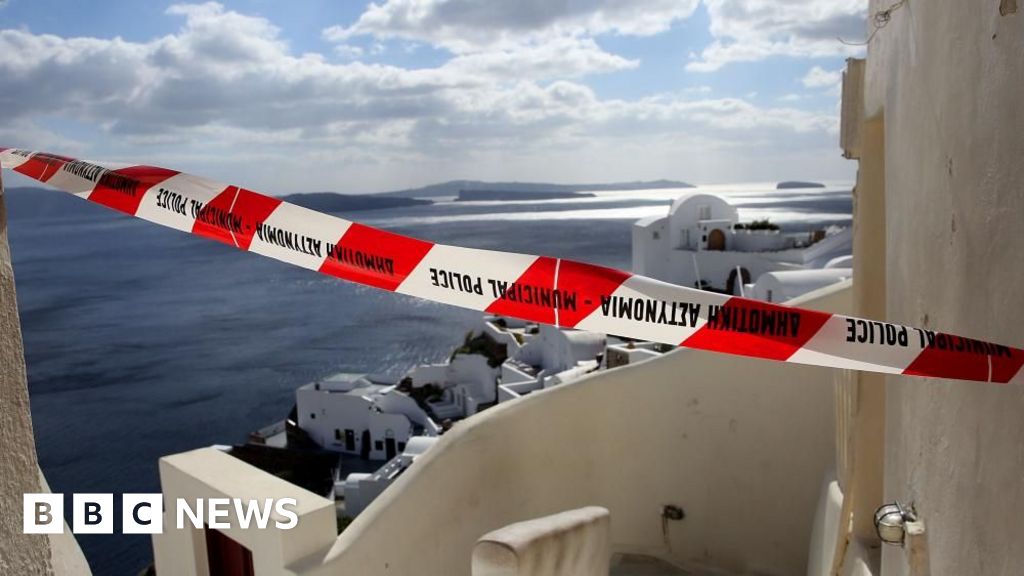After several days of trembling, a strong earthquake has been recorded between Amorgos in Greece and the Greek islands in Santorini.
Over 11,000 people have already left Santorini, about 7,000 have departed by ferry and 4,000 have departed in the air.
On Wednesday, a magnitude 5.2 earthquake occurred at 21:09 local time (19:09 GMT), making it the strongest in recent years. It is estimated that it occurred at a depth of 5km.
A 4.7 magnitude earthquake recorded southwest of Amorgos at 07:50 local time on Thursday after 57 tremors was recorded between midnight and 06:30.
So far, no major damage has been reported on the island, but authorities are taking precautions and braces in case a bigger tremor hit.
“Seismic activity continues at the same pace as the previous day,” Geodynamic Institute director Vasilis Karastathis told Ertnews.
“We have quite a few earthquakes, which are larger than four,” he said.
“Even so, we are not in a position to see evidence that leads to a sequence being completed slowly. We are still in the middle of the road. Retreat.”
Santorini welcomes millions of tourists each year, but it is currently low season, meaning local residents and workers make up the majority of the evacuees.
Inclement weather means that the ferry from Santorini to Piraeus Port near Athens will not operate. The disadvantage is expected to last for the next few days.
Many travelers stay at Santorini port to board an emergency ferry route set up so many families want to leave the island.
Schools in Santorini – and other adjacent islands, including Anaphy, Paros, Naxos and Mykonos, will remain closed until Friday when authorities decide when they can reopen.
The island is reinforced with firefighters and medical personnel from another island, Naxos.
All hospital employees are on standby to cancel all holidays and holidays and help those who remain on the island.
Ambulances have arrived to enhance the island’s services, and support is also expected from the military.
According to the Ministry of Health’s plan, if personnel are urgently needed, the first thing that happens is that doctors and nurses move from other islands. If Santorini needs increase, doctors from Athens will also be sent to the island.
In the event of a major earthquake and telecommunications issue, a backup telecommunications station is set up at Santorini City Hall.
Minister of Climate and Civil Protection Vasilis Kikirias said a squad of firefighters specializing in natural disasters has been dispatched to Santorini. Teams with special dogs and mobile operations centres are also sent to the island, but helicopters are in standby in case of emergency.
Kikirias also said the coast guard and military could be used to support vulnerable people who want to evacuate.
Earlier on Wednesday, Greek Prime Minister Kiliakos Mitotakis struck optimistic tone at a meeting of civil protection experts.
“First and foremost, the state trusts science and scientists. We did this in other crises,” the prime minister said.
“All plans are in place. The military has been moved to Santorini and other islands, so every unforeseen situation is ready,” emphasized Mitotaki.
“We continue this way, hoping that things will improve and that this phenomenon will sink.”
Mitotakis appealed to his statement in an appeal to the islanders, saying that he would “sedate and cooperate with the authorities.”
“I understand the fear of being in Santorini, but it’s constantly shaking,” he added, emphasizing that the situation is evaluated daily.
In a letter to government ministries, the Thira Chamber of Commerce called for the island to suspend businesses and require emergency assistance measures to be taken during Covid-19.
“The outcomes of the local economy are immeasurable. The central market is weakening, and businesses are losing their customers and revenue,” the letter reads.
“The island is abandoned as 11,000 permanent residents have left yesterday.
“We therefore believe that emergency should be introduced, especially for Santorini, as the local economy is collapsing and the situation is constantly getting worse.”
Santorini is known as a volcanic arc in Greece, a chain of an island made by volcanic, but the last big eruption was in the 1950s.
Greek authorities say the recent tremors are linked to tectonic plate movements rather than volcanic activity.
Scientists cannot predict the exact timing, size, or location of an earthquake.
But there are areas in the world where they are likely to occur that can help governments prepare.
Earthquakes are the result of the movement of tectonic plates within the Earth’s crust. Sometimes these plates lock together when they meet. This is called a plate boundary or fault line.
Santorini and other Greek islands are located near such lines.



